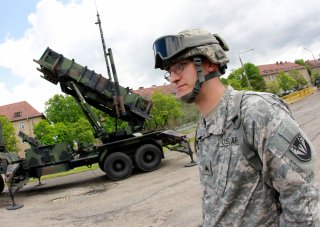Dead Drones: How the Army Will Kill Any Enemy Unmanned Aircraft
Taking them out.
Armored vehicle convoys maneuvering through mountainous terrain as part of a massive, coordinated combined arms ground attack, could easily be vulnerable to fast-appearing, close-in enemy drone attacks. Forward Operating Bases, often fighting without immediate air support, are also potentially susceptible to fast-approaching drone swarms. Dismounted, forward-moving infantry operating in small groups without armored vehicles or close-air support could be especially at risk of a coordinated close-in, small drone attacks.
Enemy drones, even low-tech ones, are not only widely available but extremely dangerous to ground forces in today’s modern warfare threat environment. While many countermeasures already exist or are in rapid development, persistent innovation is now being prioritized by the Pentagon, in an effort to stay in front of adaptive enemies pursuing fast-expanding avenues of attack. The U.S. Army is now improving existing drone defense weapons and moving quickly to deploy new ones, such as interceptor missiles, networked ground sensors, laser weapons and EW, among other things.
“Moore’s Law states that the processing power of electronic devices doubles every 18 months. By 2025 the currently widely proliferated “quadcopter” drones and their successors will have the capability to fly autonomously—at much higher altitudes, with longer flights—and be capable of complex formation maneuvers. These advances may happen soon since drones are already making strides in these areas,” the essay states. (Lt Col Leslie F. Hauck III, USAF & Dr. John P. Geis II, Colonel, USAF, Retired .. as of 2017).
Kris Osborn previously served at the Pentagon as a Highly Qualified Expert with the Office of the Assistant Secretary of the Army - Acquisition, Logistics& Technology. Osborn has also worked as an anchor and on-air military specialist at national TV networks. He has appeared as a guest military expert on Fox News, MSNBC, The Military Channel and The History Channel. He also has a Masters Degree in Comparative Literature from Columbia University.
Image: Reuters

